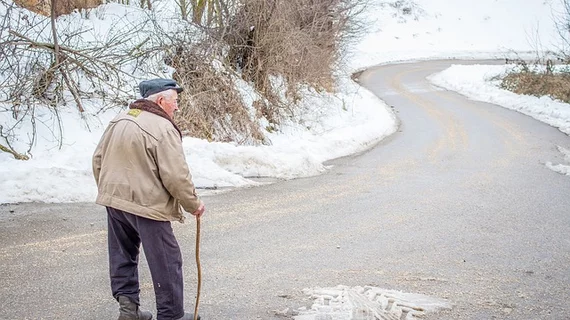TCT 2017: Frailty provides prognostic value for TAVR patients—but better risk scores are needed
DENVER — Measuring frailty could lead to more accurate predictions of outcomes following transcatheter aortic valve replacement (TAVR) than a validated risk algorithm, according to research presented Oct. 30 at the annual Transcatheter Cardiovascular Therapeutics (TCT) scientific symposium.
Kyle D. Buchanan, MD, with the MedStar Washington Hospital Center in Washington, D.C., presented two studies on the same 544 patients from the single, high-volume TAVR center. All patients had a full frailty assessment and a Society of Thoracic Surgeons (STS) risk score calculated before the procedure.
Buchanan’s group found patients who were deemed frail were five times more likely to die within 30 days and 2.75 times more likely to die within a year when compared to patients with STS risk scores of 8 or above.
“Frailty does seem to have more of an impact on an outcome and a better predictor of one-year mortality than STS and it may be beneficial to continue our assessment in TAVR patients as indications are broadened to lower-risk patients,” he said.
Frailty was defined by the presence of three of the five following criteria: body mass below 20 kilograms per square meter, serum albumin below 3.5 grams per deciliter, Katz Index of independence in activities of daily living score less than 4/6, low grip strength and slow 15-foot walk time. The STS risk score is a short-term risk calculator that has traditionally been used to determine eligibility for TAVR versus surgical valve replacement, but has recently been suggested to predict postprocedural TAVR mortality.
At MedStar Washington Hospital Center, Buchanan said he and colleagues use frailty measures to support STS scores.
“We start with STS scores as an objective measurement and their frailty will bump them up a category or two, or not, depending on the result of that,” he said.
However, he acknowledged conducting frailty tests is a luxury not all hospitals can afford.
“It takes time and a lot of resources for these tests,” he said. “They’re not simple question-and-answer tests, and we have the benefit of a clinical team to help us out with this. If you don’t have that structure in place it does make it more difficult to carry out a lot of these frailty tests.”
Buchanan said he sees these frailty measures as simply prognostic, not as a way to exclude patients at high risk for receiving TAVR. Even among the 242 patients deemed frail in the study, about 75 percent survived through the one year of follow-up.
Bernhard Reimers, MD, with Humanitas Clinical and Research Center in Milano, Italy, said he would like to see a risk measurement model strong enough to help doctors determine when a procedure is futile. Some interventions in high-risk patients might simply prolong suffering for patients and their families, he said.
“Here we saw with a high frailty score, high STS score, mortality in one year is 25 percent,” said Reimers, who moderated a TCT session on high-risk TAVR patients. “But how can we with such high scores exclude 75 percent of survivors? We have to find something more specific.”

